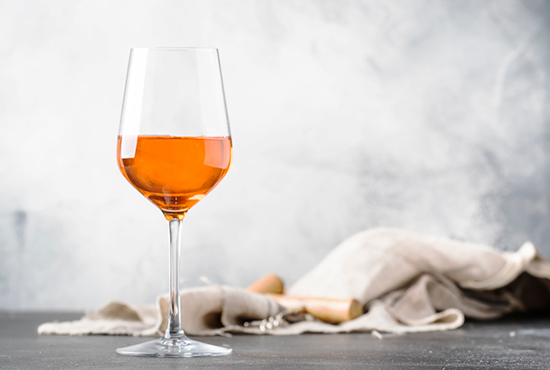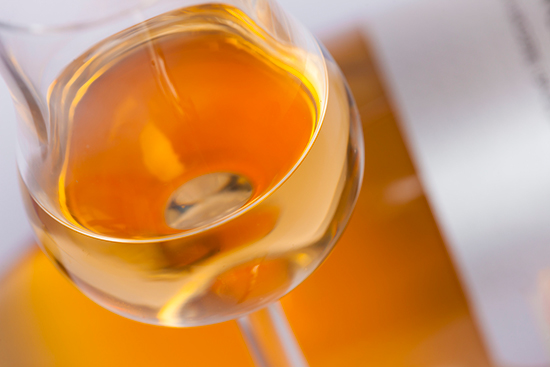Unveiling the Mysteries of Orange Wine: An Expert’s Guide

Being in the wine industry, I've been fortunate enough to explore countless varieties and styles of wine.
Among the most fascinating and lesser-known types is orange wine.
In this guide, I'll share my insights into the captivating world of orange wine, its production process, and what sets it apart from traditional white wines.
What is Orange Wine?
Orange wine, contrary to its name, is not made from oranges. I’m sorry if I’ve just delivered bad news!
It’s a unique type of wine made from white grapes, undergoing a different production process than typical white wines.
The resulting wine boasts a beautiful amber hue, hence the name "orange wine."
Let’s find out what the key differences are.

The Art of Making Orange Wine
The production process of orange wine is what sets it apart from other wines.
While white wine is made by quickly separating the grape juice from the grape skins, orange wine is produced by allowing the juice to ferment with the grape skins, much like red wine production.
This extended skin contact imparts a deep amber color, tannins, and complex flavors to the finished product.
Essentially, orange wine uses white wine grapes in the red wine production style.
A Unique Taste Profile
Orange wines exhibit a broad range of flavors, typically characterized by tasting notes such as bruised apple, orange peel, honey, nuts, and dried fruits.
The extended skin contact also adds a distinct tannic structure and body to the wine, giving it a mouthfeel more akin to red wines than white.
I would recommend orange wine to adventurous wine drinkers who enjoy exploring unique and unconventional wine styles.
Orange wine can be particularly appealing to those who appreciate the complexity and tannic structure of red wines but are also fond of the fruity and aromatic qualities of white wines.
While orange wine is quite distinct from both red and white wines, it shares some similarities with certain white and red wine styles.
Orange wine can be somewhat similar to full-bodied white wines, such as an oak-aged Chardonnay or a rich Viognier, due to its complex flavors and substantial mouthfeel.
In terms of red wines, orange wine's tannic structure and body may remind some drinkers of lighter reds like a Pinot Noir or Gamay.
That said, orange wine is a unique category on its own and offers a different tasting experience that can't be directly compared to any specific red or white wine.
It's best enjoyed with an open mind and a sense of adventure, as it will likely surprise and delight those who give it a try.

Comparing Orange and White Wines
The primary difference between orange and regular white wines lies in the production process and the resulting flavors and textures.
Orange wines are more robust and tannic, with a diverse flavor profile that sets them apart from the fresh, fruity, and often crisp characteristics of white wines.
In essence, orange wines bridge the gap between white and red wines, providing a unique drinking experience.
The History and Origins of Orange Wine
Orange wine can be traced back thousands of years to the ancient winemaking traditions of Georgia.
Georgia is considered to be one of the world's oldest wine-producing regions, with archeological evidence of winemaking dating back over 8,000 years.
Traditional Georgian winemaking involved fermenting the grape juice with its skins, seeds, and stems in large egg-shaped clay vessels called qvevri, which were buried in the ground.
This extended skin contact during fermentation is what gives orange wine its distinct color, tannins, and complex flavors.
This ancient winemaking method has been preserved and passed down through generations in Georgia, where it remains an integral part of the country's winemaking heritage.
In the late 20th century, a renewed interest in traditional and natural winemaking methods led to the modern resurgence of orange wine.
Winemakers in Italy, particularly in the Friuli-Venezia Giulia region, started experimenting with extended skin contact for white grape varieties, inspired by the Georgian tradition.
The popularity of orange wine has grown since then, with producers in Slovenia, Croatia, Austria, France, and the United States, among others, embracing this ancient technique and creating their unique interpretations of orange wine.

Notable Regions for Orange Wine
So where does the best orange wine come from? Let's find out!
Friuli-Venezia Giulia, Italy - The Modern Cradle of Orange Wine
The Friuli-Venezia Giulia region of Italy has played a pivotal role in the resurgence of orange wine in recent decades.
Located in the northeastern part of Italy, bordering Slovenia, this region is known for its diverse soil types, a cool climate, and numerous indigenous grape varieties, making it an ideal location for producing high-quality and unique wines.
The modern orange wine movement can be attributed to winemakers in Friuli-Venezia Giulia who started to experiment with extended skin contact for white grapes in the late 20th century, drawing inspiration from ancient Georgian winemaking techniques.
This approach quickly gained traction and led to the creation of many exceptional orange wines that showcased the region's distinct terroir.
Some of the most respected producers of orange wine in Friuli-Venezia Giulia include Gravner, Radikon, and Vodopivec.
Gravner, helmed by the visionary winemaker Josko Gravner, is known for its Ribolla Gialla, an iconic orange wine made with the indigenous Ribolla Gialla grape variety.
Radikon, another influential producer, offers the Slatnik and Oslavje wines, which feature a blend of Chardonnay, Pinot Grigio, and other local varieties.
Vodopivec, famous for its minimalist approach, produces the Vodopivec Vitovska, a wine made exclusively from the Vitovska grape.
Slovenia - An Emerging Star in Orange Wine Production
Slovenia has become an important player in the orange wine world, particularly in the Goriska Brda region, which shares a border with Italy's Friuli-Venezia Giulia.
Slovenian winemakers have embraced the ancient technique of skin-contact fermentation, creating unique and expressive orange wines that showcase the region's terroir.
Notable Slovenian producers include Kabaj, which produces the acclaimed Kabaj Rebula, and Movia, known for its Veliko Belo and Lunar wines.
Croatia - Orange Wine on the Adriatic Coast
Croatia's Istrian Peninsula and the Dalmatian Coast have also gained recognition for their orange wines, thanks to the region's winemakers who experiment with traditional and innovative techniques.
Indigenous grape varieties like Malvazija Istarska and Grasevina are often used to create Croatian orange wines.
Some respected Croatian producers include Clai, with its Clai Ottocento Bijeli, and Roxanich, which produces the Antica Malvazija.
Austria - A Unique Approach to Orange Wine
Austrian winemakers have also ventured into the world of orange wine, particularly in regions like Burgenland and Styria.
Austrian orange wines often feature native grape varieties, such as Grüner Veltliner and Welschriesling, showcasing the country's diverse viticultural heritage.
Notable Austrian orange wine producers include Gut Oggau, with its Atanasius and Theodora wines, and Meinklang, known for its Graupert Pinot Gris.
France - A New Wave in a Traditional Wine Country
In France, the Jura and Alsace regions have seen a growing interest in orange wine production.
French winemakers are experimenting with skin-contact fermentation using local grape varieties like Savagnin, Pinot Gris, and Gewürztraminer.
Some noteworthy French orange wine producers are Domaine Ganevat, with its Les Vignes de Mon Père, and Domaine Binner, known for its Saveurs d'Amour and Si'Rose wines.
United States - Orange Wine Meets New World Innovation
In the United States, orange wine production can be found in various regions, such as California and Oregon.
American winemakers are embracing this ancient winemaking technique and applying it to both traditional and lesser-known grape varieties.
Donkey & Goat in California produces the Stone Crusher Roussanne, while Teutonic Wine Company in Oregon offers the intriguing Candied Mushroom Riesling. These producers showcase the versatility and creativity of orange wine in the New World.
Toasting with Critically Acclaimed Orange Wines
Ready to try some orange wine? Let’s finish with some recommendations of critically acclaimed bottles that showcase the unique attributes of this wine style:
Gravner Ribolla Gialla, Friuli-Venezia Giulia, Italy - $100 (750ml) - 2010

This complex and captivating wine offers notes of dried apricot, orange zest, and honey, with an unmistakable minerality and a long, satisfying finish.
Kabaj Rebula, Goriska Brda, Slovenia - $35 (750ml) - 2017

This Slovenian gem boasts aromas of bruised apple, pear, and dried herbs, supported by a firm tannic structure and an intriguingly earthy finish.
Donkey & Goat Stone Crusher Roussanne, El Dorado, California, USA - $50 (750ml) - 2019

Hailing from California, this delightful wine features flavors of ripe peach, quince, and almond, accompanied by a pleasant tannic backbone and a lingering, refreshing finish.
Embracing the Orange Wine Revolution
Orange wine represents a fascinating departure from traditional white wines, offering an exciting alternative for those seeking new taste experiences.
Its unique production method and diverse flavor profile make it a must-try for any wine lover. As you venture into the world of orange wine, I hope my insights and recommendations serve as a helpful guide in discovering and appreciating this captivating wine style.
If you’re trying orange wine for the first time be sure to let me know what you think down below!
Cheers!
